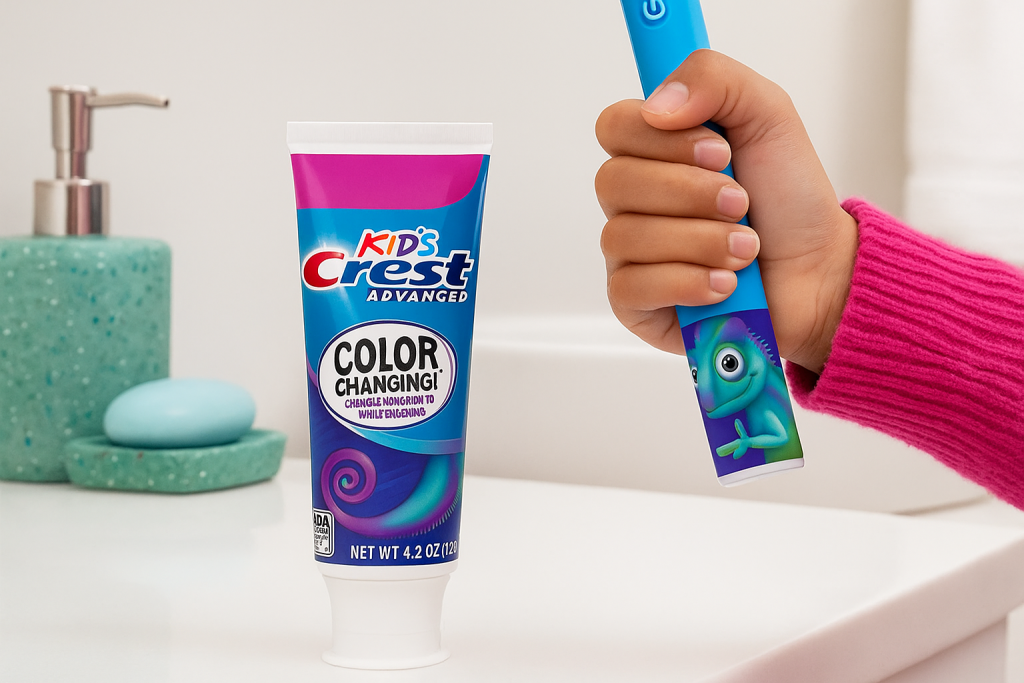
A federal judge has allowed a lawsuit against P&G to proceed, finding that the packaging of Kid’s Crest toothpaste may mislead parents about how much toothpaste is safe for children. The ruling raises major questions about marketing practices, consumer safety, and future packaging standards.
What did the judge rule?
The lawsuit, Gurrola et al v. Procter & Gamble Co. (N.D. Ill., No. 25-00358), alleges that P&G’s Kid’s Crest packaging misrepresents safe usage by showing a full strip of toothpaste and highlighting the ADA seal, implying it’s safe for children to use that amount.
- The judge rejected P&G’s motion to dismiss, allowing the plaintiffs to move forward with their consumer-protection claims.
- The court emphasized that the risk of children swallowing fluoride is a “central part of the story,” not a peripheral concern.
- The case will now enter discovery, meaning the plaintiffs can gather internal marketing, design, and regulatory materials from P&G.
Why is this case significant?
Fluoride dosage and ingestion risk
Health authorities recommend that:
- Children under 3 use a smear of toothpaste.
- Children 3–6 years use a pea-sized amount.
Images of full strips are up to 10 times larger than these guidelines — and the plaintiffs argue they encourage overuse and ingestion.
Marketing visuals under scrutiny
The lawsuit points to candy-flavored varieties (Bubble Gum, Sparkle Fun) and colorful designs that can make toothpaste seem edible. Combined with full-strip imagery, these marketing cues may lead caregivers and children to underestimate ingestion risks.

What this means for parents and consumers
- Don’t rely on package visuals — follow dental-health guidance and supervise brushing until children can spit independently.
- Check for ADA age labels and directions for use.
- Avoid full-strip brushing for children under 6; use only a smear or pea-sized amount.
- Watch out for sweet-flavored toothpaste that could make children swallow more than recommended.
What retailers and operators should know
- Packaging visuals can create liability, even when text complies with FDA rules.
- Review product displays — separate oral-care items by age range and include safe-use signage.
- Train employees to answer customer questions about usage and fluoride safety.
- Monitor manufacturer updates: Colgate-Palmolive has already announced packaging changes to depict smaller amounts, a move that may pressure competitors to follow.
Broader regulatory and legal implications
This decision is part of a growing trend of consumer lawsuits targeting marketing visuals in health and personal-care products. Regulators such as the FDA and FTC may issue new guidance on child-oriented packaging and advertising practices if cases like this continue.
frequently asked questions (FAQ)
Does this mean Kid’s Crest is unsafe?
Not necessarily. The ruling allows the lawsuit to proceed, it doesn’t establish liability. The product remains FDA-approved, but the case questions whether its marketing visuals are misleading.
Are other companies involved?
Yes. Colgate-Palmolive, Tom’s of Maine, and others face similar lawsuits over fluoride-based children’s products.
What can parents do right now?
Use minimal toothpaste for young children, supervise brushing, and ensure kids spit out rather than swallow toothpaste.
How Juris Law Group can help
Juris Law Group advises consumer-product manufacturers, distributors, and retailers on labeling compliance, marketing risk, and litigation strategy. Our attorneys have deep experience navigating FDA and FTC regulations, class-action defense, and product-safety labeling disputes. Businesses can contact us to evaluate packaging and marketing materials for compliance before issues arise.
Key Takeaway
This ruling signals that even accurate product labels can face lawsuits if imagery or branding creates misleading impressions, especially when children’s health is involved. Parents should double-check usage guidance, and companies should review packaging through a legal-risk lens. Visual marketing is no longer just creative design, it’s a compliance issue.
